The Rime of the Ancient Mariner - illustrated by Errol le Cain
Since starting work at Stella & Rose's Books I have been privileged to see many special books: from Beatrix Potter 1st editions to signed Blyton books, from rare 1st editions to well remembered childhood favourites – and all points in between! It is still exciting to see something rare and unusual and this book certainly comes into those categories.
This copy of The Rime of the Ancient Mariner was published in 1972 by Arcadia Press to coincide with the 200th anniversary of Coleridge's birth. It is one of 110 limited editions (nos 101 – 110 were not for sale) – this copy is number 5, signed by the illustrator (Errol Le Cain), calligrapher (David Howells) and the paper maker (Phillip H. Rowson). It is a large book contained in a slipcase.
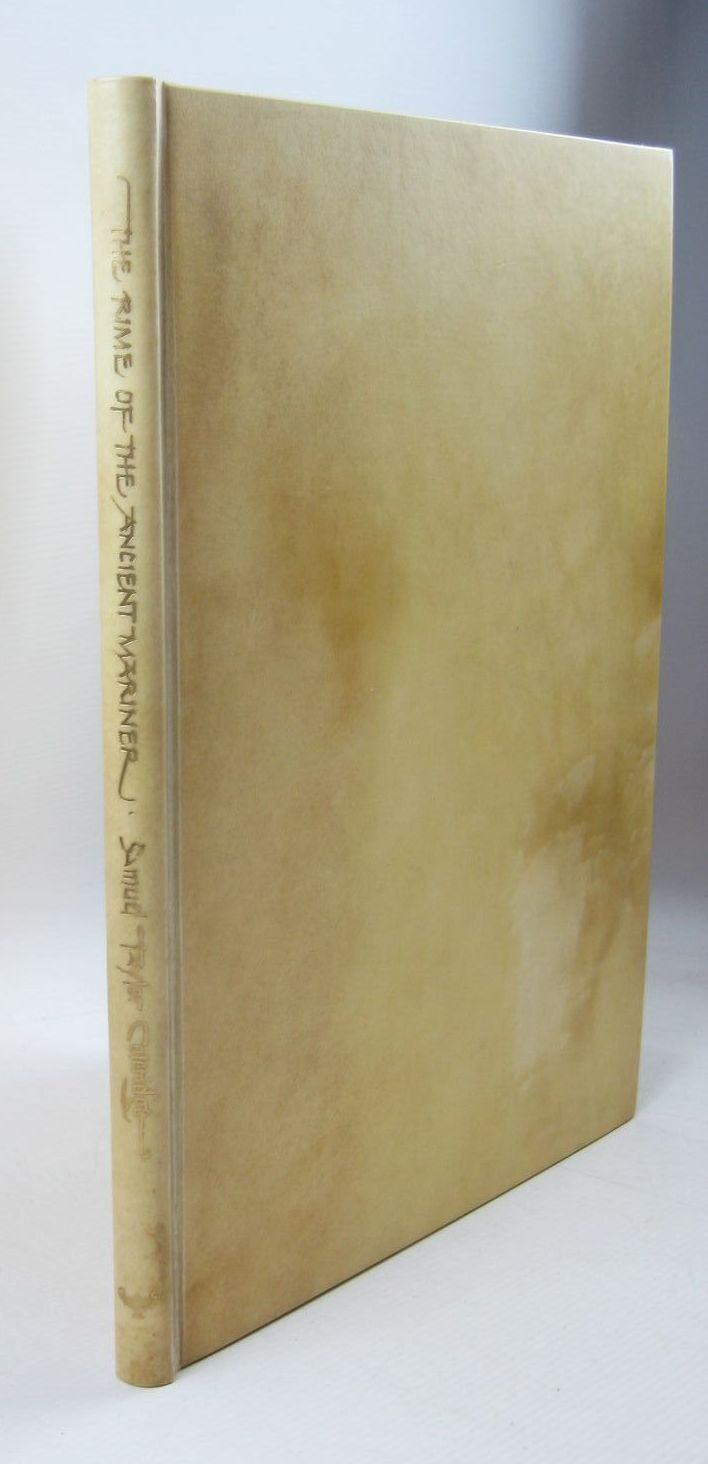

Errol Le Cain was born on 5th March 1941 in Singapore. A year later he was evacuated to Agra in India when the Japanese invaded Singapore. He returned to Singapore at the end of the war and went to school there before coming to England in 1956. Despite no formal art education his obvious talent was apparent at age 11 when he produced his first animated film! He pursued a career in animation for film and television, working for Pearl & Dean (a British film distributor) and then for the animation studios of Richard Williams. He became a freelance illustrator and set designer in 1969.
Le Cain published his first Children's book King Arthur's Sword in 1968 and he would go on to illustrate many more. He was awarded the Kate Greenaway medal in 1984 for Hiawatha's Childhood. Sadly Le Cain died in 1989 aged 47 following a long illness.
The poem was written by Samuel Taylor Coleridge between 1797 and 1798. It was first publised in 'Lyrical Ballads', a collection of poetry by Coleridge and his friend, William Wordsworth. Coleridge was born in Devon in 1772, the son of a clergyman. In his adult years he was addicted to laudanum and opium and this addiction may have contributed to the supernatural themes of some of his poems, including this one.
So what makes this book so special?
Firstly I would say it is the paper. This is fairly thick and a creamy colour. It is handmade with pieces of seaweed pressed into it. At first glance some pages look like they have been marked but a closer inspection reveals small fronds and lines of the seaweed which give an atmospheric look to the book.
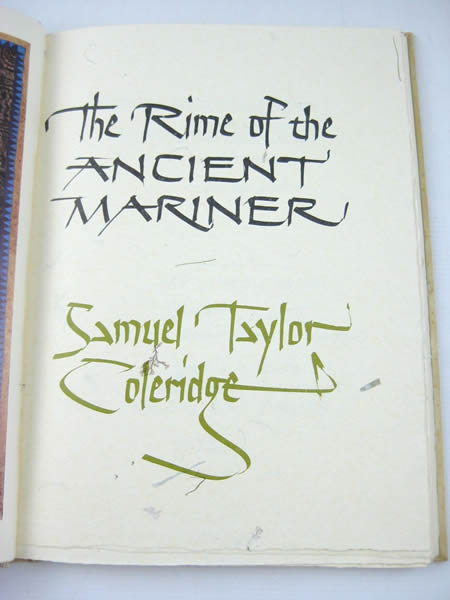
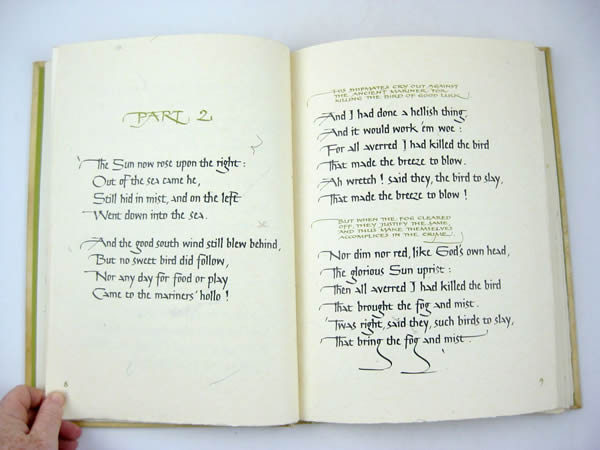
The writing is beautiful – in black or green ink. It is described as calligraphic style and reminds me of ancient manuscripts penned by scribes.
But it is the illustrations which really make this book stand out. Large, boldly coloured and vibrant they vividly portray aspects of the story. It is said that they are reminiscent of some of the older illustrators from the golden age.
The first illustration sets the scene. The Ancient Mariner meets three guests on the way to a wedding and he stops one of them and begins to relate the story:
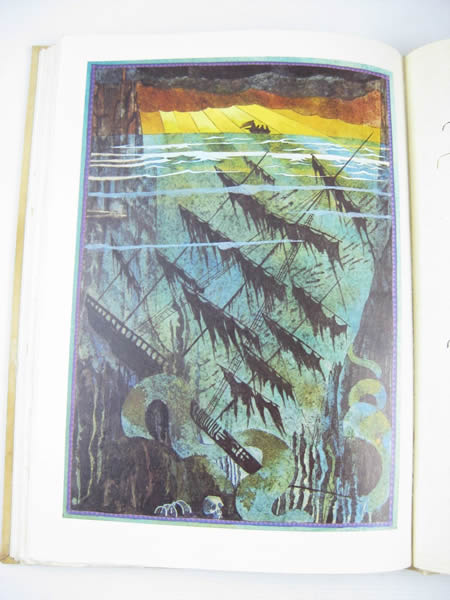
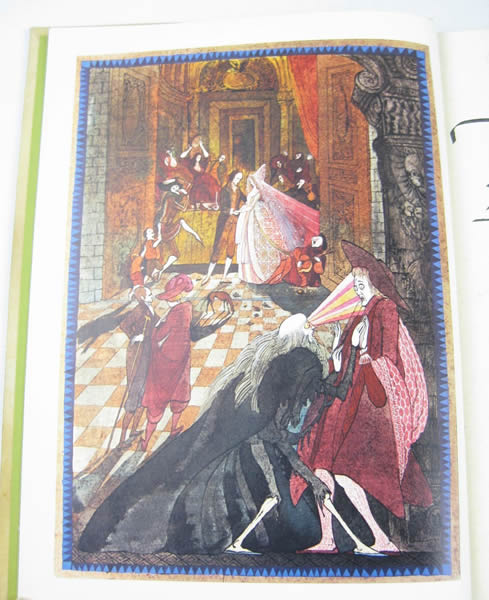
It is an ancient Mariner,
And he stoppeth one of three.
'By thy long grey beard and glittering eye,
Now wherefore stopp'st thou me?
The Bridegroom's doors are opened wide,
And I am next of kin;
The guests are met, the feast is set:
May'st hear the merry din.'
He holds him with his glittering eye-
The Wedding-Guest stood still,
And listens like a three years' child:
The Mariner hath his will.
The next illustration is I think my favourite. It shows how following a storm the ship has ended up in cold, icy, misty waters. The ship and the sailors are enveloped in what looks like an iceberg and the colouring used show coldness. The whole picture is bleak.
And now there came both mist and snow,
And it grew wondrous cold:
And ice, mast-high, came floating by,
As green as emerald.
After several mishaps the ship sails to the equator and the sun is blindingly hot. On the horizon they see another ship which they hope will help them. The ship is almost like a ghost ship with two characters on board – a man – Death and a woman - Life-in-Death.
I think the colours in this give an idea of heat and portray the sun through the sails.
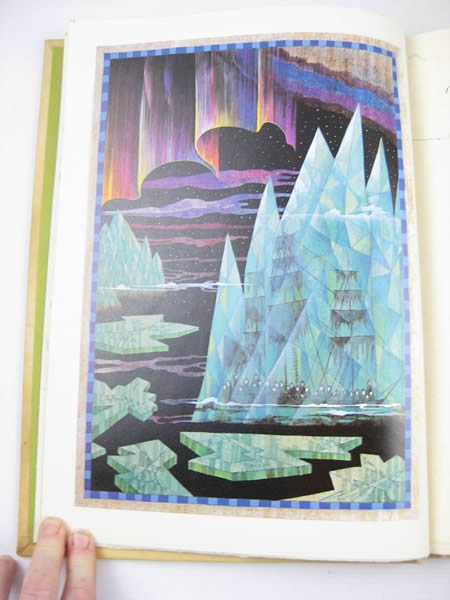
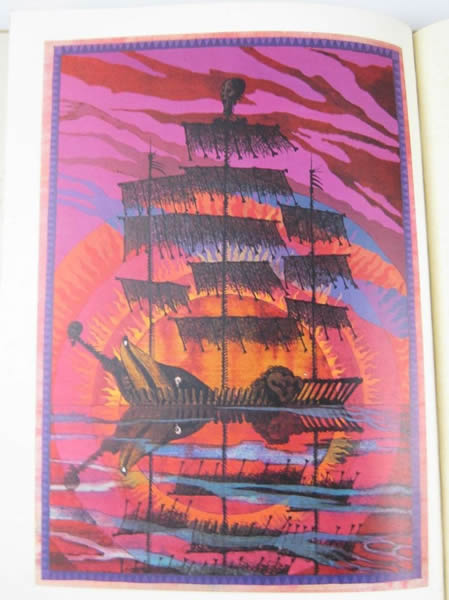
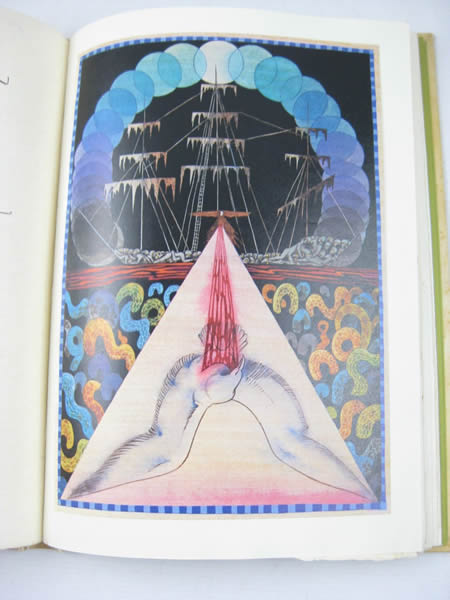
Are those her ribs through which the Sun
Did peer, as through a grate?
And is that Woman all her crew?
Is that a DEATH? and are there two?
Is DEATH that woman's mate?
Things get worse and the other sailors all die. The Mariner is in the depths of despair. Surrounded by his dead comrades he tries to pray but can't. Until eventually watching the water snakes he is able to pray. The dead albatross (which he himself had killed) fell from his neck and into the sea.
The self-same moment I could pray;
And from my neck so free
The Albatross fell off, and sank
Like lead into the sea.
Eventually the Mariner is rescued by a Hermit a Pilot and the pilot's boy. Just in time as the ship sinks. The Mariner gets to land and is destined to wander the world telling his tale.
This picture shows the ship going under – from the light into the darkness.
The boat came closer to the ship,
But I nor spake nor stirred;
The boat came close beneath the ship,
And straight a sound was heard.
Under the water it rumbled on,
Still louder and more dread:
It reached the ship, it split the bay;
The ship went down like lead.
This is certainly a memorable book!
To read more about the poem itself please see Tim's article on The Rime of the Ancient Mariner.
Contributed by Catriona
(Published on 15th Aug 2016 )


